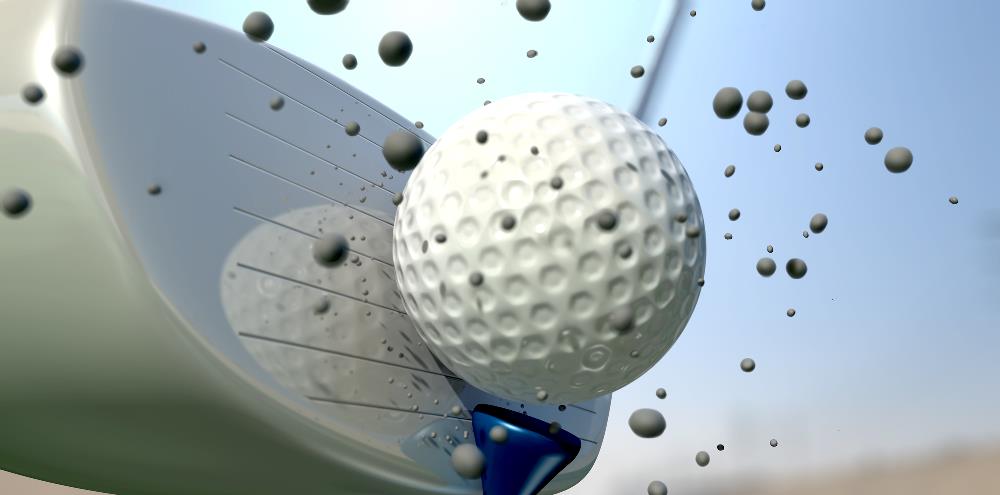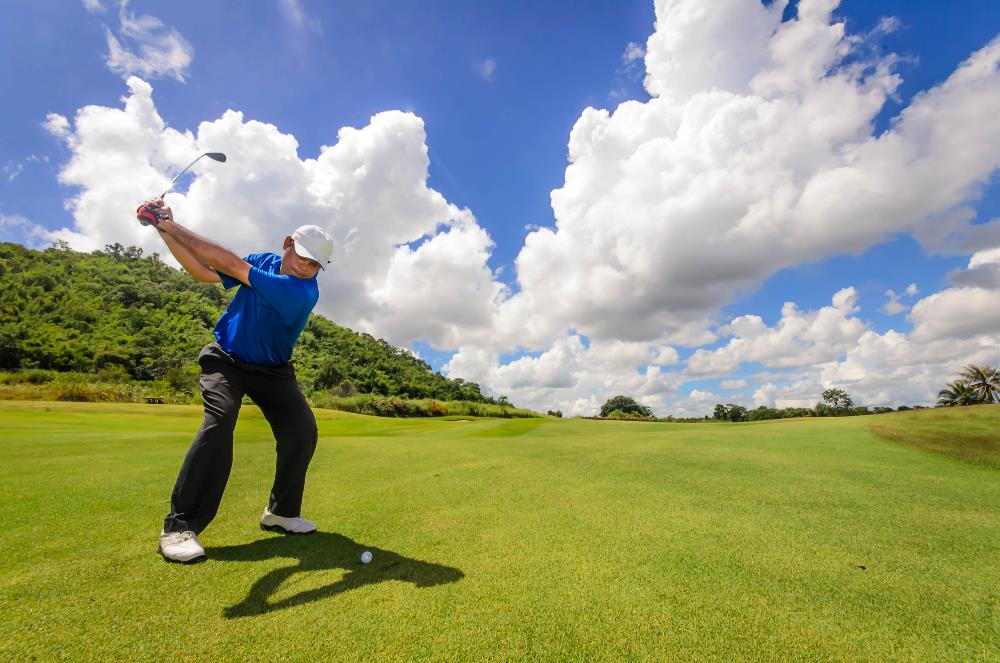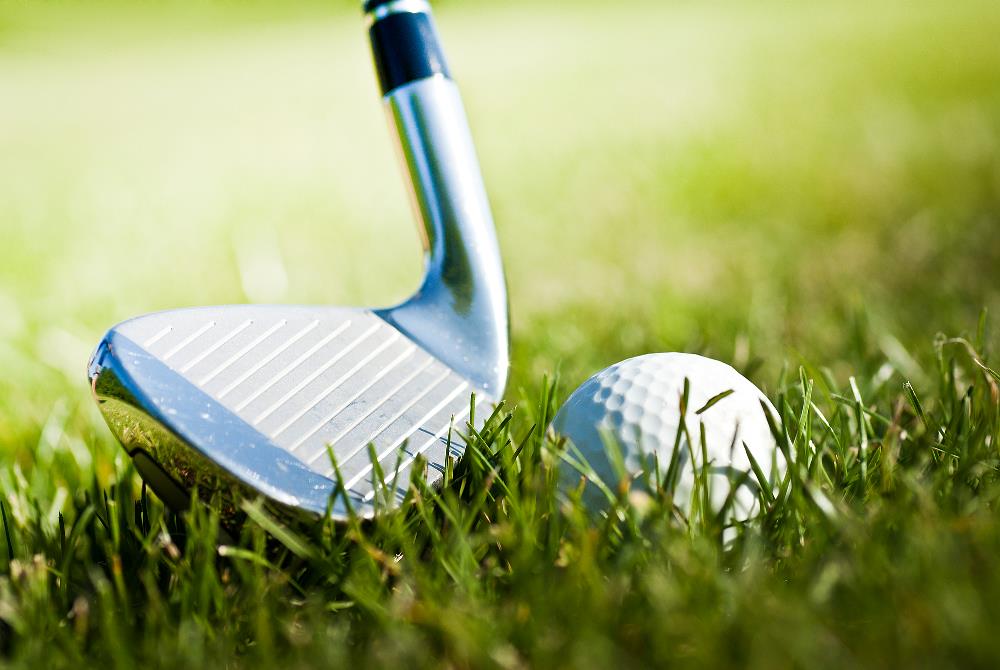There are many clubs in golf bags, so if you’re a beginner it can be intimidating to pick the best one. Each golf club has a specific function and shot pattern, so learning which club to use in which circumstance can improve your game and, more importantly, lower your score.
While each club has a specific purpose, it is more frequently decided which one to use for any given shot based on the total distance that can be covered with that club. Let’s compare golf club distances and look at a few additional elements that may affect how far your golf ball travels.
Factors That Affect Golf Club Distances
Given that a golf bag typically contains at least a dozen clubs and that every golfer has a different range of skills and striking distance, it is very difficult to provide a precise response to the question of what the average hitting distance of each golf club is.

The overall distance a golf club travels is influenced by a number of variables. The loft angle, carry distance, swing speed, and frequently the weather are the most crucial factors. A club’s loft is its individual face angle; the higher the loft, the steeper the ball can be raised with that club. A pitching wedge is made with a 48–53 degree loft angle while a long driver has a smaller (8–12 degree) loft angle.
An average of these distances, for both men and women, can be found in various golf books or charts. The carry distance or yardage of a club is the distance from the point of impact on the ball to the point of its landing.
The club face’s impact with the ball at full swing speed is fairly self-explanatory. The carry distance and the swing speed are two crucial, interrelated factors that determine how far a ball can be hit using a particular club after it has been selected.
Last but not least, the weather, particularly the wind speed, has a significant impact on how far a golf ball travels.
The Role of Physical Strength
In the end, your body’s muscles power your golf clubs. If all other factors are equal, it stands to reason that your muscle strength will ultimately determine the speed and distance of a golf ball you can hit. The strongest muscles that are involved in swinging a club are those in the shoulder, core, hip, and thigh. These have a direct impact on club speed, which in turn affects the maximum distance you can hit with each golf club.

Your height and gender can have an impact on your level of physical strength when playing golf. In general, tall people can hit farther than short people. Golf tournaments are typically gender-specific because men can typically hit longer shots due to their higher average physical strength than women.
Distances Expected From Woods
Woods are a type of golf club that were originally made from wood for long-distance shots. They are now made from different metals, but the name has stuck for clubs which have the longest shafts and largest heads out of all clubs. Woods are used to achieve the maximum ball speed and distance. They are preferred by golfers for their first shots from the tee and also on the fairway on longer holes.
It is difficult to account for all factors and assign average distances you can expect from any type of golf club, but it has been done through years of data and experimentation. Some charts try to do this and according to them, an average player can be expected to hit between 200 and 240 yards with woods, with a beginner doing well to hit 150 yards with the same club. A professional can go as long as 300 yards, with the record distance in tournament play achieved by the late Mike Austin who hit a 515 yard drive in 1974.
Distances Expected From Irons
Since they were first made from forged iron, irons have gone by that name. These days, they are made of cast steel, and recently, due to their incredibly light weight, graphite irons have gained popularity among professional golfers. Although they are frequently used off the tee as well, irons are the weapon of choice when striking the ball from the fairway towards the greens.

Typically, irons are numbered from 1 to 9. Shorter shafts, greater loft angles, and heavier heads are associated with higher numbers. Looking at approximate distances, a beginner can anticipate hitting a 9 iron 75 to 90 yards. A skilled player can travel up to 150 yards with the same club, compared to an average player’s typical 125 yards. These distances gradually grow as you descend towards the 1 iron from the 9 iron because the trajectory’s decreased loft angle.
Distances Expected From Hybrids
Hybrids are a cross between woods and irons to benefit from the best qualities of both types of clubs. They were initially used to get out of the rough, including heavy grass and bushes as well as other obstacles around the fairway and the green. However, they have evolved, and many golfers now prefer hybrids over woods or irons for fairway shots due to their favorable balance. With hybrids, you can expect similar shots to what you can hit with irons of up to number 5.
If you are going to use hybrids as a replacement for irons, you can expect 5 to 8 yards more distance with a hybrid than the number of iron club you intend to replace. If you get 140 yards with a 3 iron, you can get more than 145 with a 3 hybrid. This serves as a good estimation to compare hybrids with other types of golf clubs.
Know Your Own Golf Club Distances
Irons have been referred to be such since they were first created from forged iron. These days, they are made of cast steel, and recently, professional golfers have started to favour graphite irons due to their incredibly light weight. Irons are the preferred club when striking the ball from the fairway towards the greens, though they are frequently used off the tee as well.
Irons are typically numbered from 1 to 9. Higher numbers are related to shorter shafts, larger loft angles, and heavier heads. A beginner can anticipate hitting a 9 iron 75 to 90 yards away by looking at the approximate distances. A skilled player can cover up to 150 yards with the same club, as opposed to the usual 125 yards of a non-skilled player. As you move from the 9 iron to the 1 iron, these distances increase gradually due to the trajectory’s decreased loft angle.

